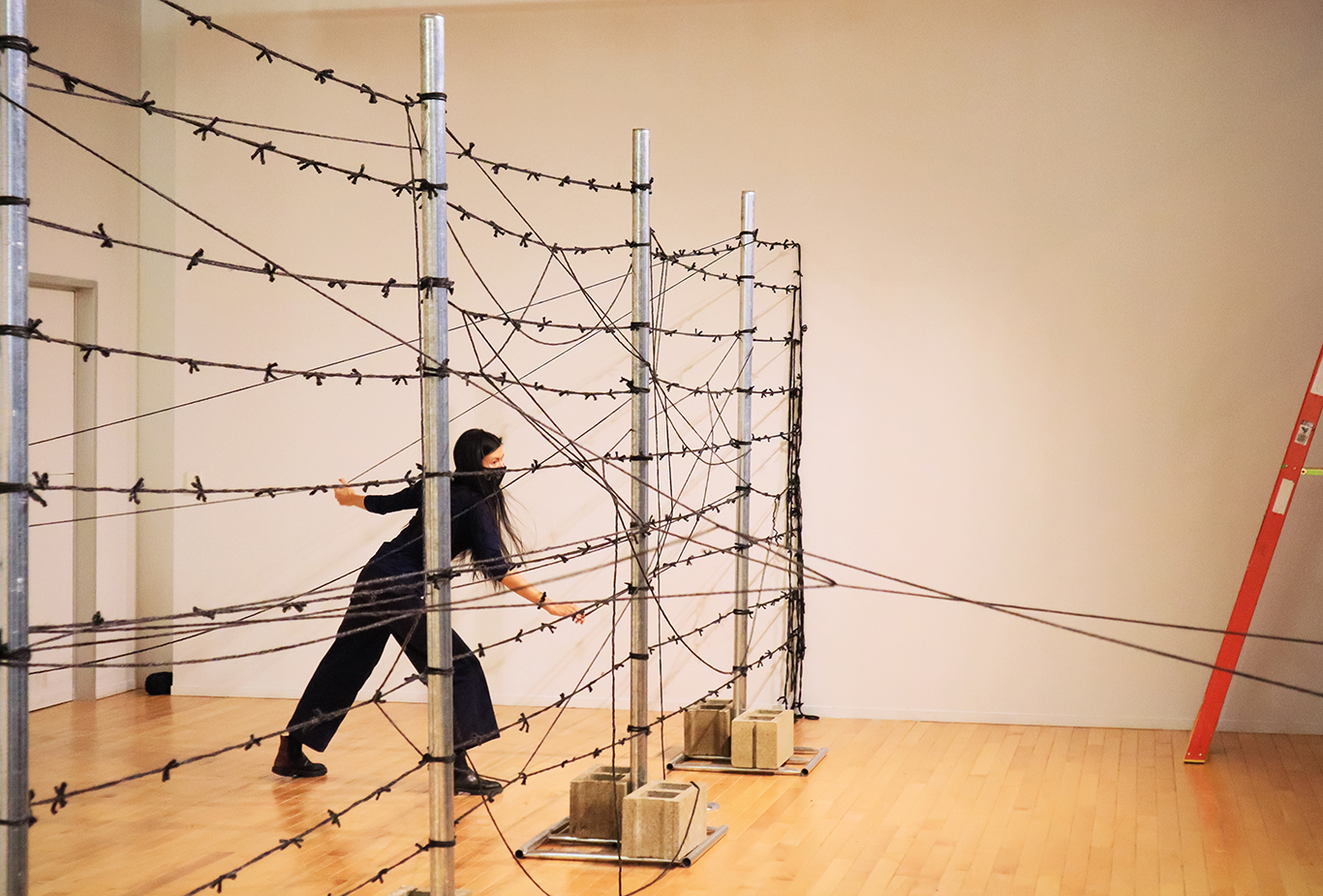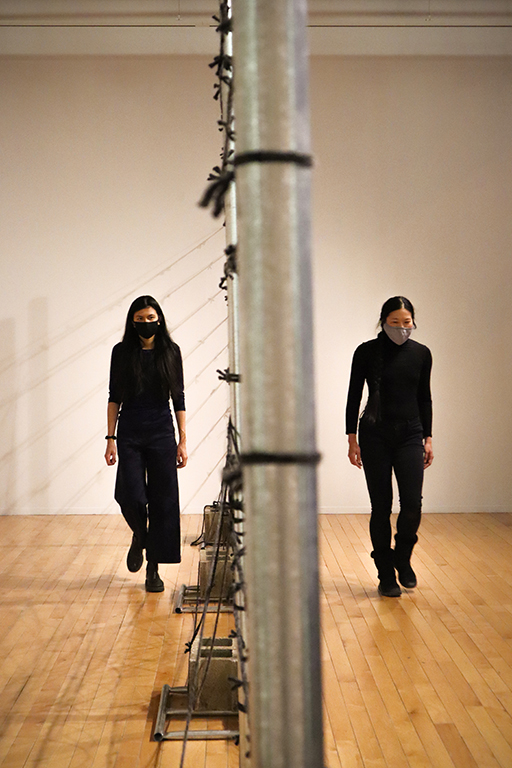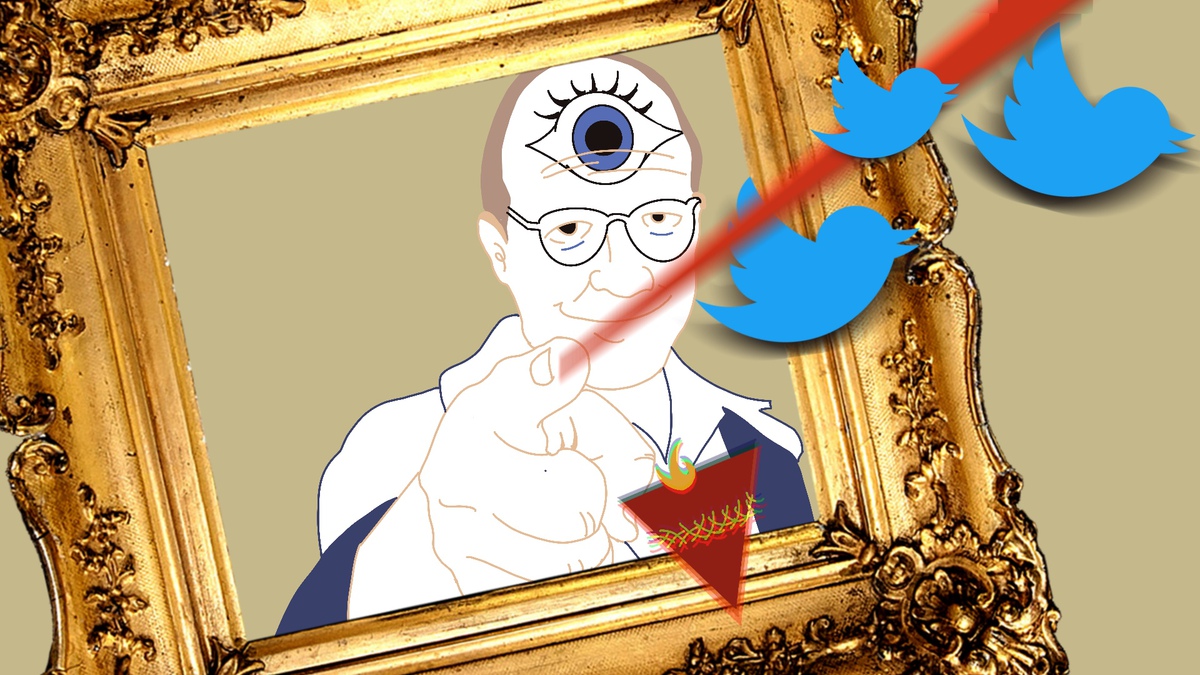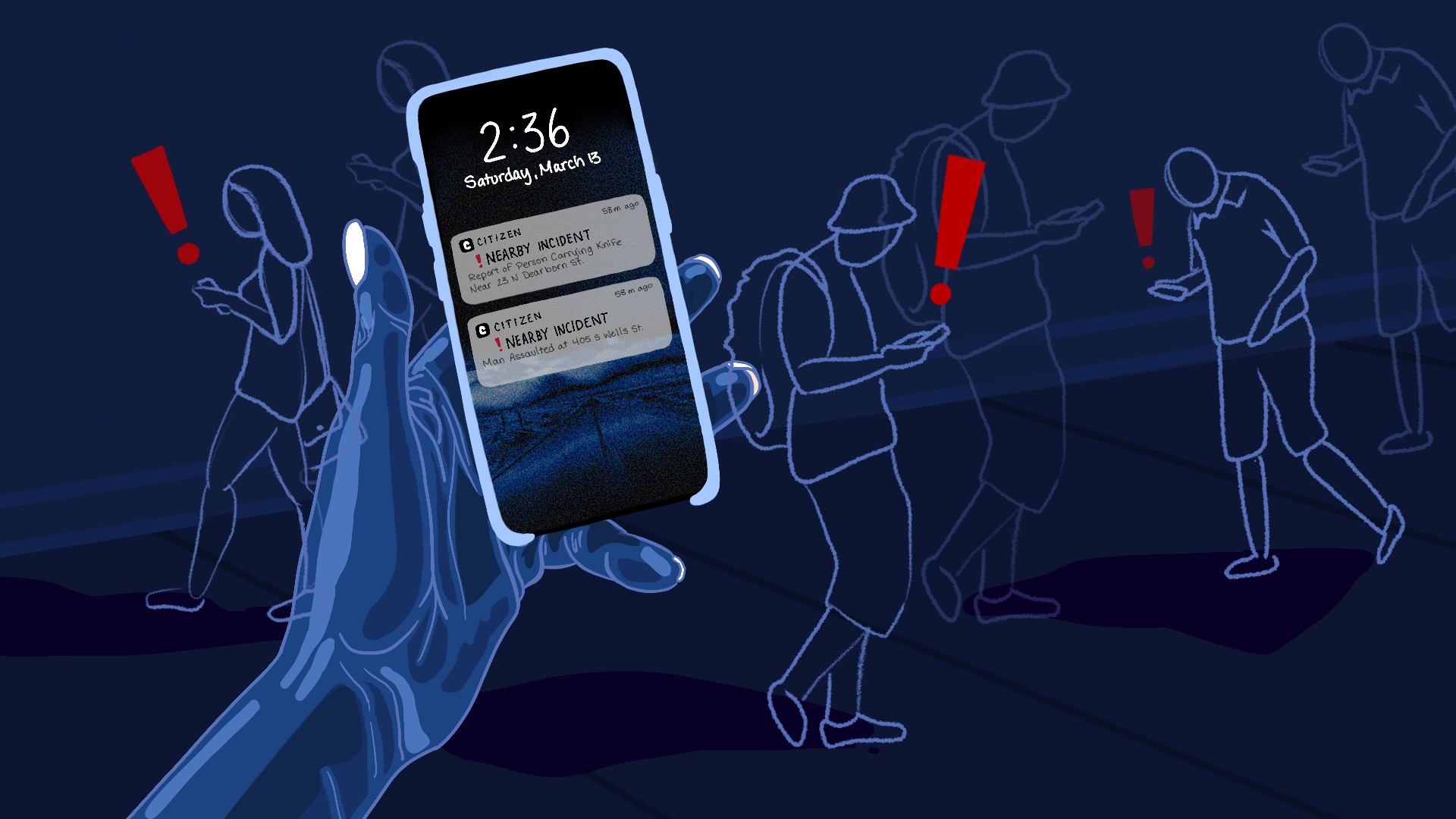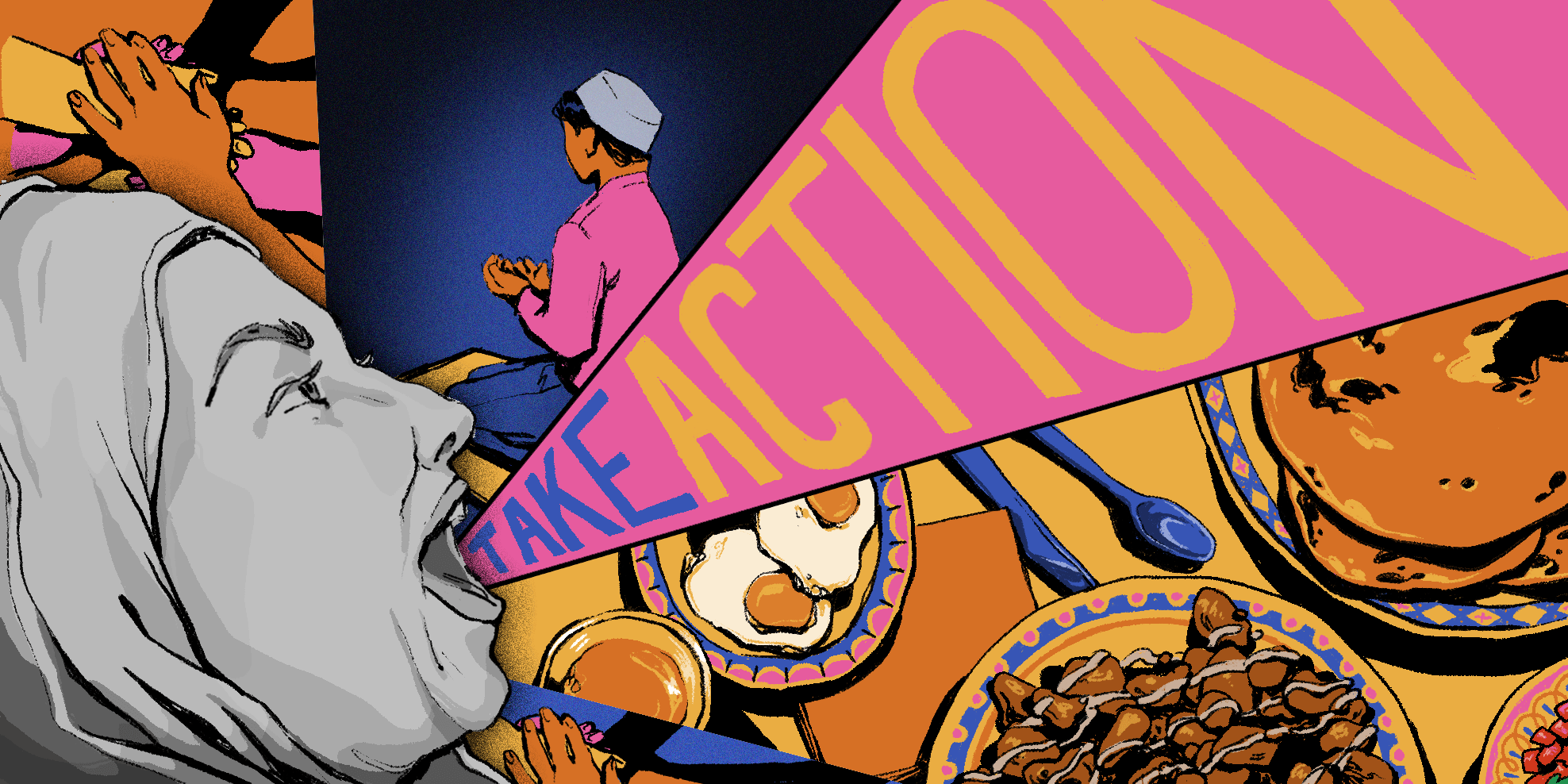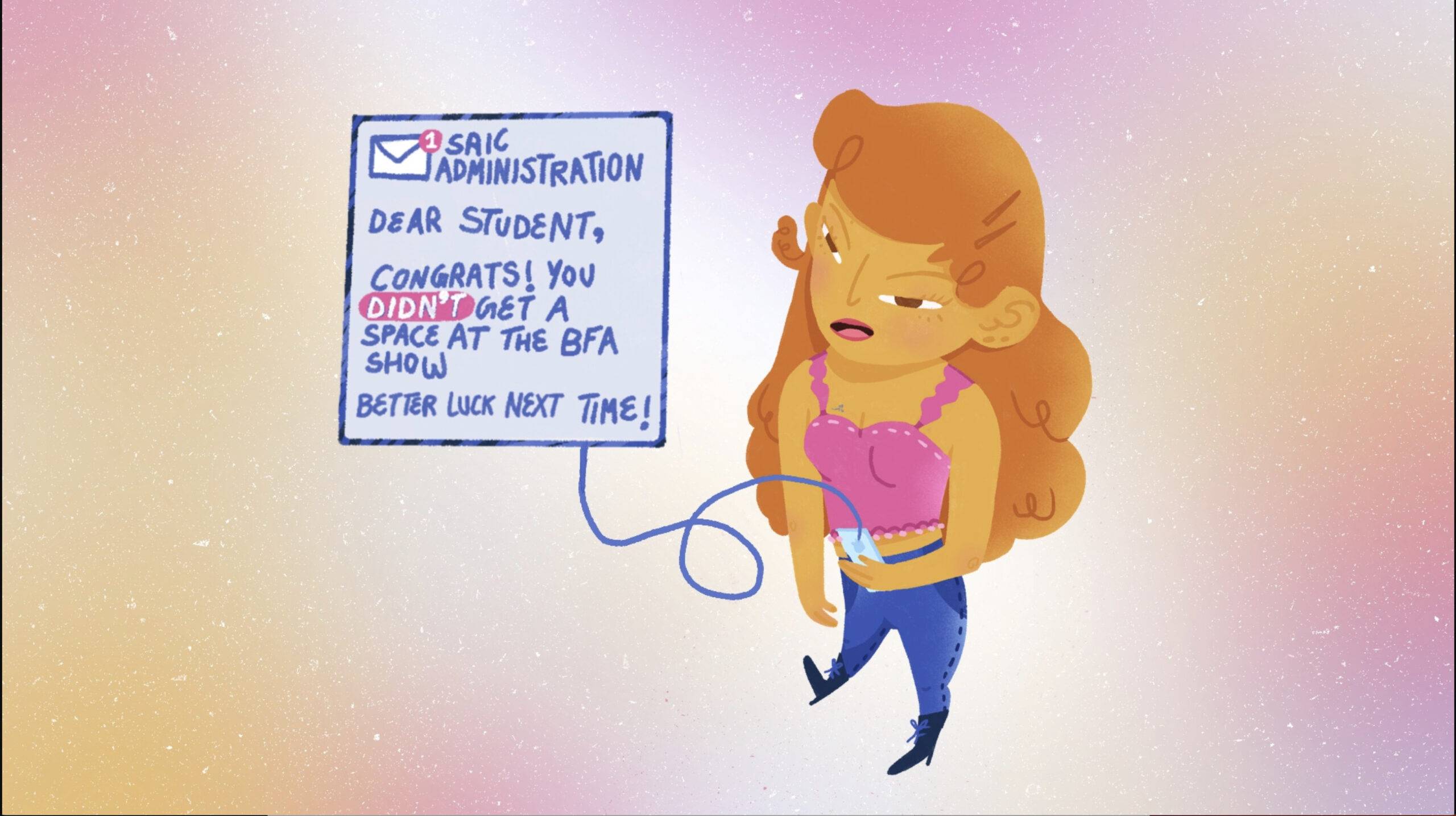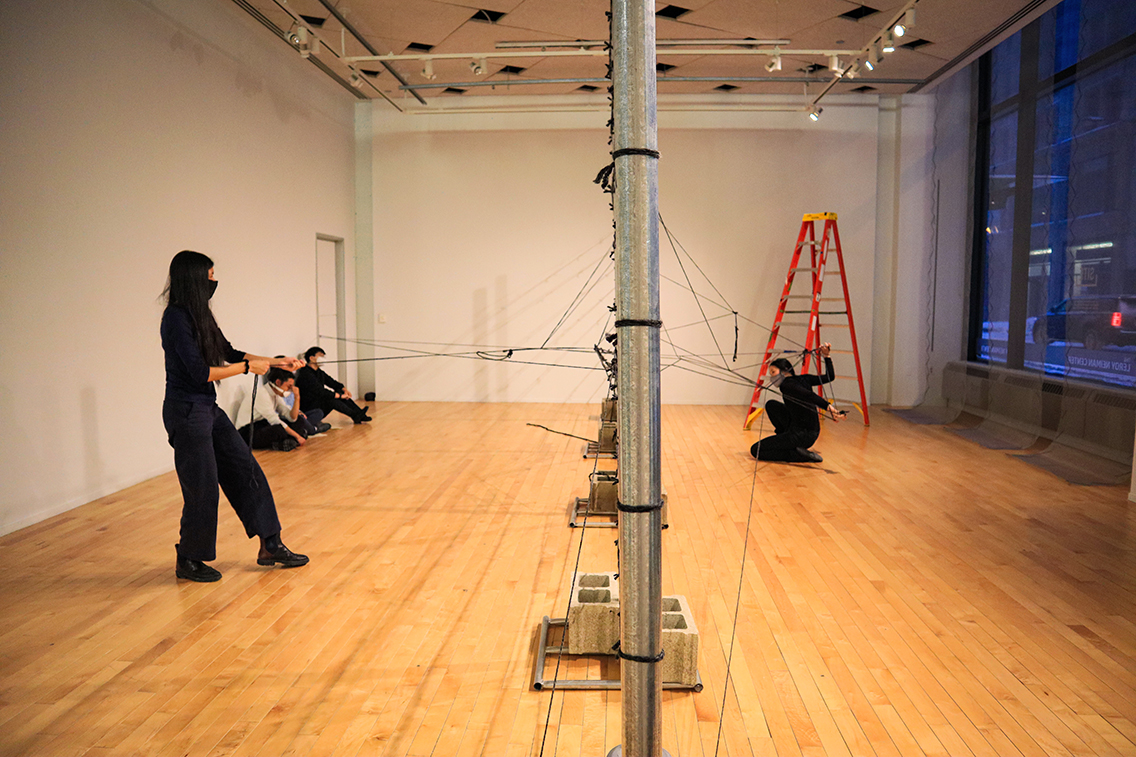
Artist Maya Nguyen and collaborator Irene Hsiao perform maintenance on the fence at the SITE Gallery. Photos by Veronica Rosas Vargas, courtesy of SITE.
After almost a year away from Chicago, I have found it an ongoing challenge to feel connected. Stepping into the Sharp Building for the first time since last March, I was greeted by new arrows and signs pointing me towards the elevators and gallery. Despite the near-empty lobby, I found myself carefully shuffling along these walkways. I was reminded that in the past year we’ve all had to find new ways to navigate space. The piece that I encountered in this gallery space reflected this ongoing readjustment and the fences, borders, and distances that keep us apart.
“Knotted Lines” showed at the School of the Art Institute of Chicago (SAIC)’s SITE Galleries from Feb. 15 – March 6. The exhibition featured work by Maya Ngyuen, a current MFA candidate in SAIC’s Sound Department. Nguyen takes a multidisciplinary approach, combining sculpture and performance. According to the show description, the piece is meant to “engage the boundary as both a site of conflict and connection through the material ambiguity of hard and soft.” Despite the limited capacity at gallery shows, there is an intimacy to this exhibition and the border that it centers on. Throughout my visit, I found myself considering the generative qualities of fences. Maybe borders are more than destructive, and maybe what looks hard is actually soft.
The central sculpture is comprised of grey and red wool woven around large metal fence posts. The knots in the thread imitate the shape of barbed wire. At the windows, hazy aluminum curtains stitched with wool borders separate the inside from the outside. It is important to note that the curtains are made of the same materials as the fence, but serve as a more delicate reflection of this object. The materials rethink the definitions of the words “soft” and “hard,” and “permeable,” and “impermeable.” There is a fundamental inversion between the materials and the imagery — soft curtains are metal, and barbed wire is soft wool. In this way, the boundary becomes something fluid and entirely material.
The metal posts are placed in the center of the room, and fundamentally shift how the viewer assesses the object and navigates the space. I found that the fence almost serves as another living thing to be accommodated for and considered. This is a piece that forces the audience to interact with the art in new and specific ways, by either leaning into it, stepping away, or manipulating the threads. I notice that while some knots still imitate barbed wire, other strands fall to the floor, twist into themselves, or create thick and impenetrable ropes towards the center of the fence. As the viewer moves through space, this “border” dissolves and collapses into something new. I’m reminded of fisherman’s nets, drying laundry, a spider’s web, and knotted hair.
Much of the piece’s ambiguity results from the performative aspects of the work. Throughout the duration of the exhibition, artist Maya Nguyen and collaborator Irene Hsiao have performed hours worth of maintenance on the gallery space. Through these interactions, the fence (or rather, the boundary) has shifted. At the gallery, Maya tells me these physical acts of creation and deconstruction are not exactly cathartic, but profoundly energizing. During this time, the two weave and unweave the work, adding new wool and creating new shapes. This process is how the two introduced the red thread to the piece. I find this addition of color to be particularly compelling. It slices through the work in refreshing sharp curves, making the object feel more alive, almost like a body and the bloodstream flowing through it.
Over the course of our conversation, Maya helped me expand my understanding of her work. In the context of this piece, the border is both in conversation with the two people manipulating it, and with the larger audience. In some cases, visitors have altered the fence themselves, creating knots that are more delicate than the artist claims she would have left. The recreative nature of the fence underlines Maya’s interest in what a border can be. Borders have both constructive and hostile qualities. Maya doesn’t want the fence to be something tense that only keeps people apart, but rather something that can bring people together. What does it mean to connect with somebody? What does it mean to have a real friend? We discuss how a border can be necessary for forming meaningful connections, as it signifies a difference between yourself and someone else. Isn’t a real friend someone who just isn’t you?
For a piece that may seem somewhat abstract at first glance, “Knotted Lines” is fundamentally concerned with people. We are forced to think about the intersections between conflict and connection, question our memory, and our relationship to tactility. Maya wants each visitor to remember the work differently. I mentioned that a viewer could read the piece as one continuous wall, or five separate vignettes, because of the metal posts. The ever-changing nature of the fence and the multitude of ways one could look at it prevents any one person from having an authoritative or complete view of the piece. Instead, each visitor carries with them a memory that represents what the work has been, and the knowledge that the work will continue to change.
The boundaries encourage the viewers to interact with each other in new ways. The fence allows visitors to see beyond themselves and onto the other side. The artist noted the comfort with which visitors have been able to have conversations across the object. In fact, when I greeted Maya, it was from opposite sides of the knotted wool, where we waved and spoke for a while before crossing over to the same side. This conversation through the necessary borders of our COVID masks and the artistic border of the fence was both an energizing and affirming interaction.
I was grateful for moments of genuine connection, both facilitated by and independent of the work at the center of the room. Part of the reason this exhibition is so compelling is how the viewer learns to navigate the space both with the object and the other people surrounding it. I am again reminded of how the past year has altered our relationship to space, and the experience of sharing space with others. On the morning that I visited the gallery, I saw my anxiety and need for connection reflected back to me. In another way, I felt reintroduced to my community, learning that sometimes the thing that divides us also has the power to bring us together.

